
By Emily Polar
Travel Photographer20 Jul 2018 - 6 Minute Read
The Golden Temple is literally a 24-karat-gold-plated temple in Amritsar, Punjab, India, about 10 hours north of Delhi. It’s one of the most revered spiritual sites of Sikhism, but it’s not only Sikhs who make the pilgrimage here. The temple receives and feeds 50,000 to 100,000 people daily from all religions and walks of life, and during big festivals such as Diwali, the numbers can rise to 150,000 per day.
After learning about the openness of this religion, and the number of people they feed, I was brimming with curiosity. I mean, the kitchen?! What did it look like?
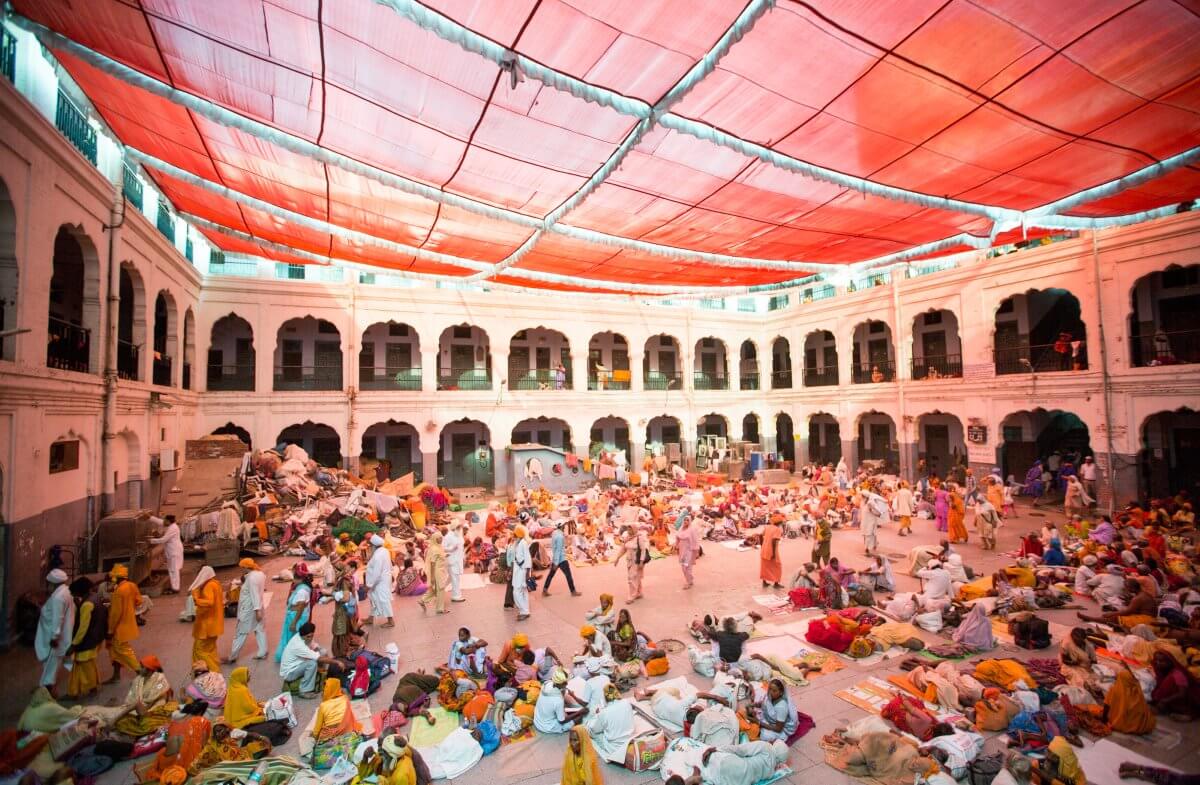
Arriving in Amritsar by bus, I was thrown into what felt like pure chaos, the low evening light adding to the disorienting sea of busy streets. I made my way through the snarl of traffic, vendors, and rickshaws to the Golden Temple and my accommodation.
The dorms for volunteers felt like a place for detaining the unruly; one big, windowless room and three smaller rooms filled, wall-to-wall, with beds.
After tossing my things in a locker, I grabbed my camera and set out for the Temple. Also known as Harmandir Sahib (or "Abode of God"), it's breathtaking in the evening, gleaming golden against the dark lake surrounding it. There are four entrances, one on each side of the Temple – not to confuse, but to emphasize that it is open to all – and one bridge leading to the Temple that, I later learned, symbolizes what Sikhs believe to be the ultimate goal of human life – to become one with the Divine.
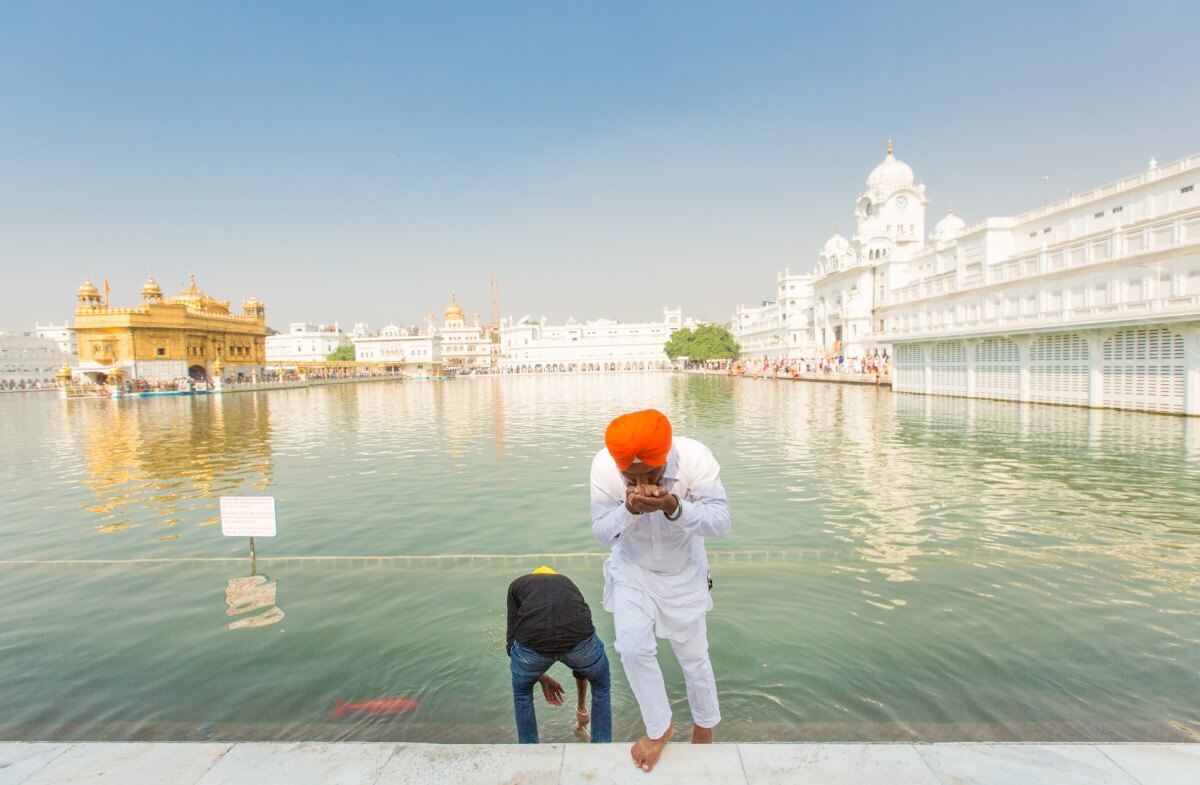
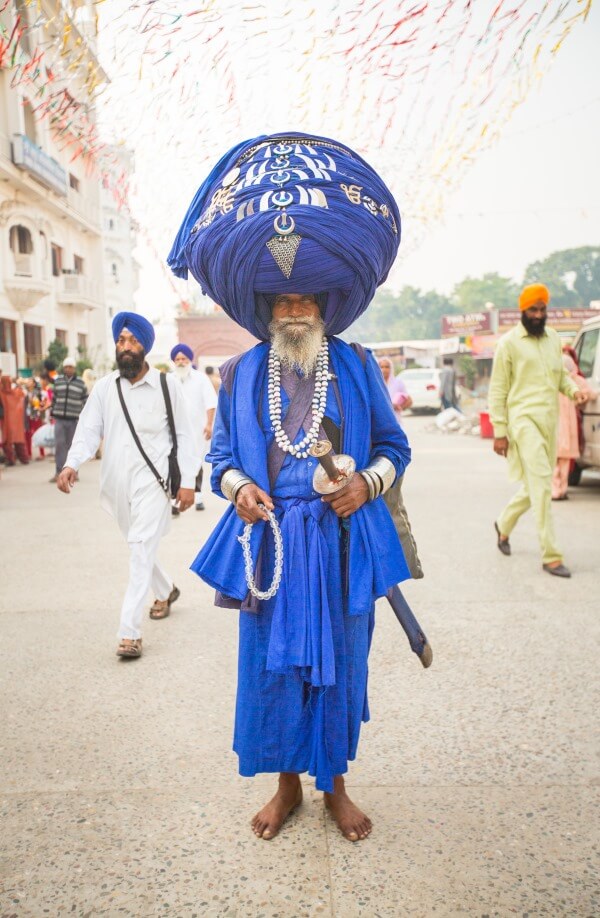
The next morning, I woke up excited to see the kitchen and the orchestrated dance that it performs 24 hours a day.
I grabbed a plate and followed everyone else to the langar (huge hall) where everyone sits on the ground. Volunteers brought out the food; buckets of lentils, rice, veg, and roti (flatbread).
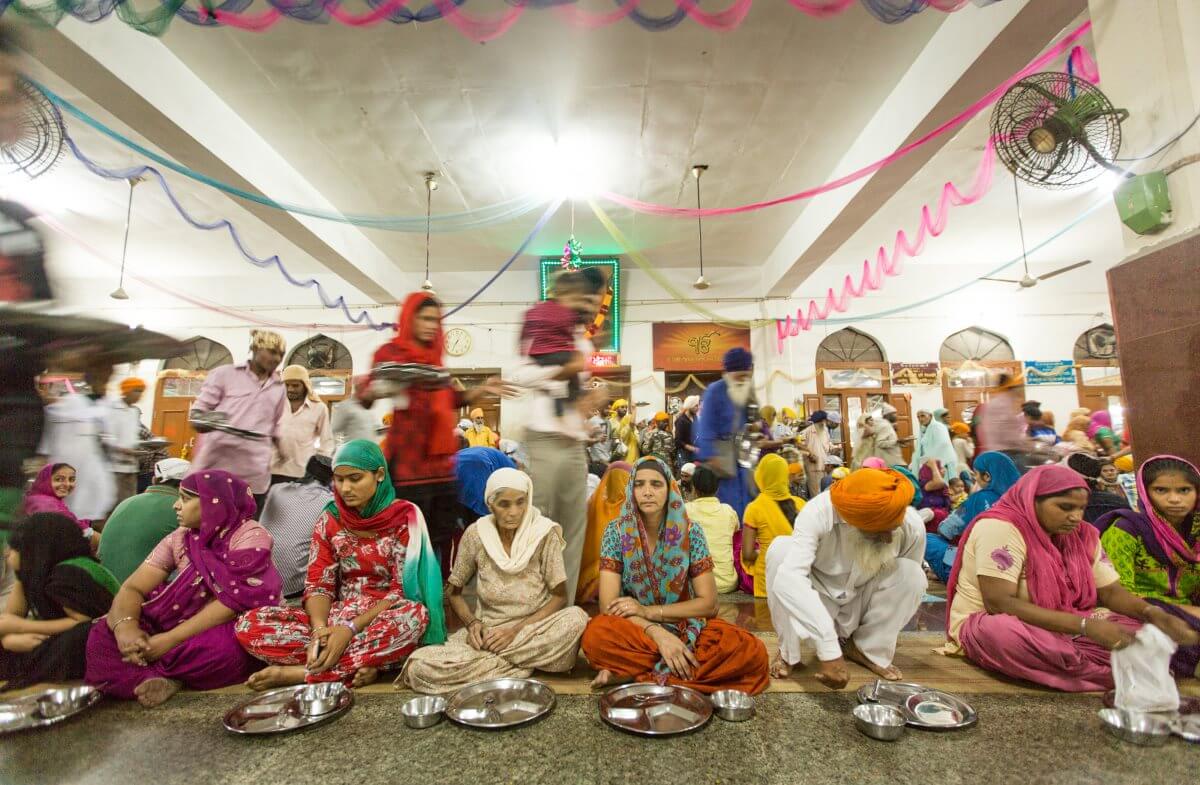
After we finished our meal, men came with water and brooms, cleaning the floors to prepare for the next batch of people. Each meal takes around 20 minutes, including serving and cleaning up, which allows for three turns per hour.
I followed the other pilgrims down the stairs to the dish drop-off – workers brushed off any extra food and put the plates into big metal buckets.
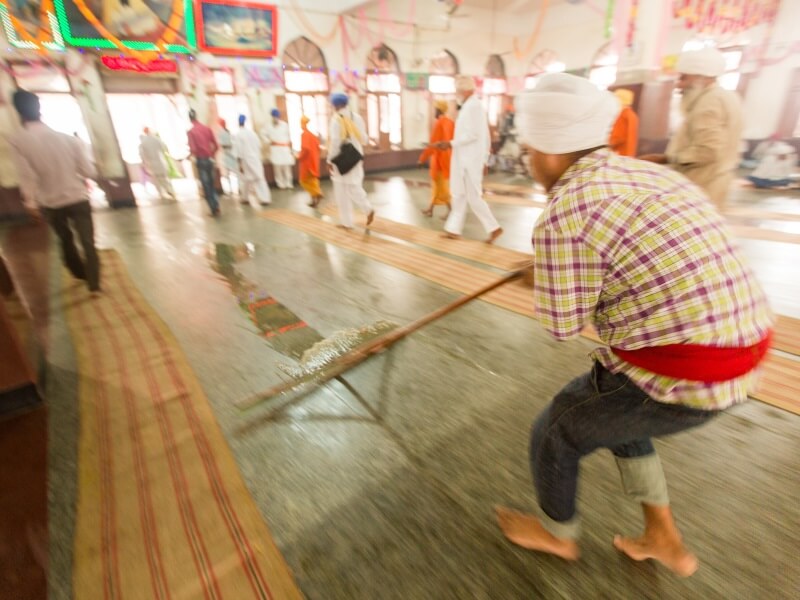
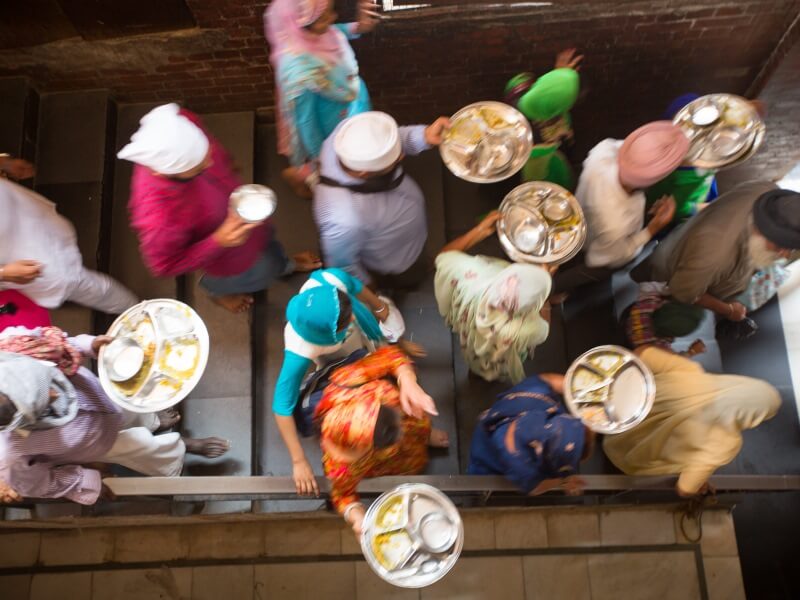
With my hands free and belly full, I explored the cooking stations. My favorites were the roti stations, where long tubes of dough were rolled, patted, and cooked. There were multiple stations, as well as machines that cranked out more than the humans could. During this Diwali festival, they had all stations producing.
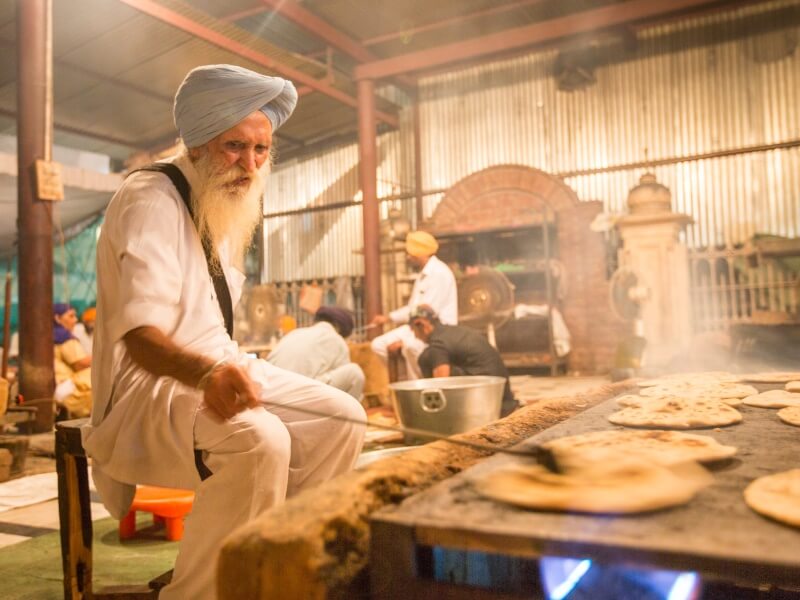

When I wasn’t helping in the kitchen, I roamed the grounds and the city. I made lots of friends in passing, taking photos of each other.
Whenever I returned to the temple, after a jaunt to the busy streets outside of the complex, I’d feel like I was back at home, with a routine and a familiar space.
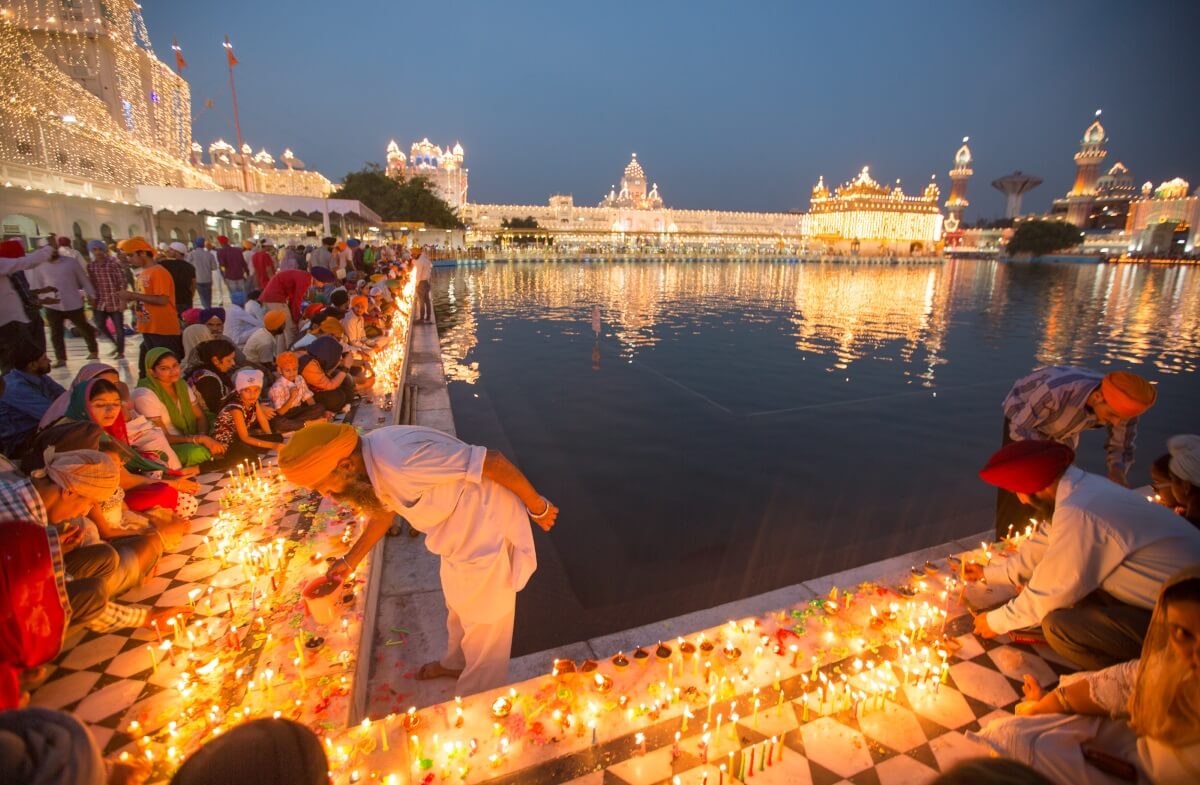
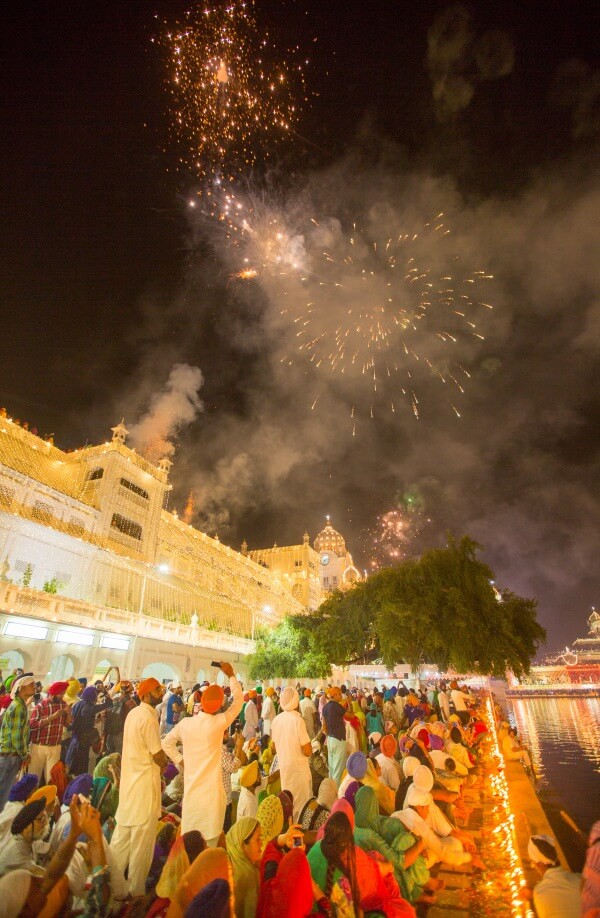
Discover similar stories in
discovery
Travel Photographer
Emily is drawn to capture images that reveal a sense of wonder and connection – photography that spurs a playful investigation into the lives of people and the land we inhabit.
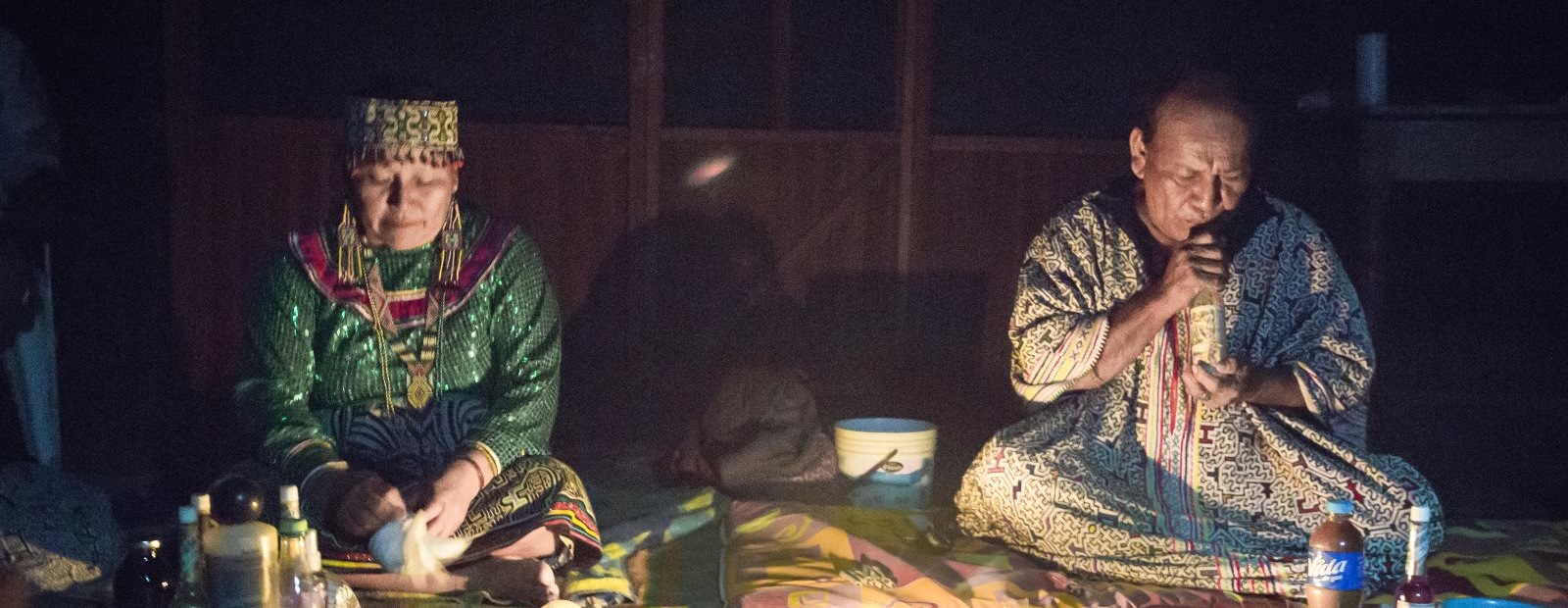
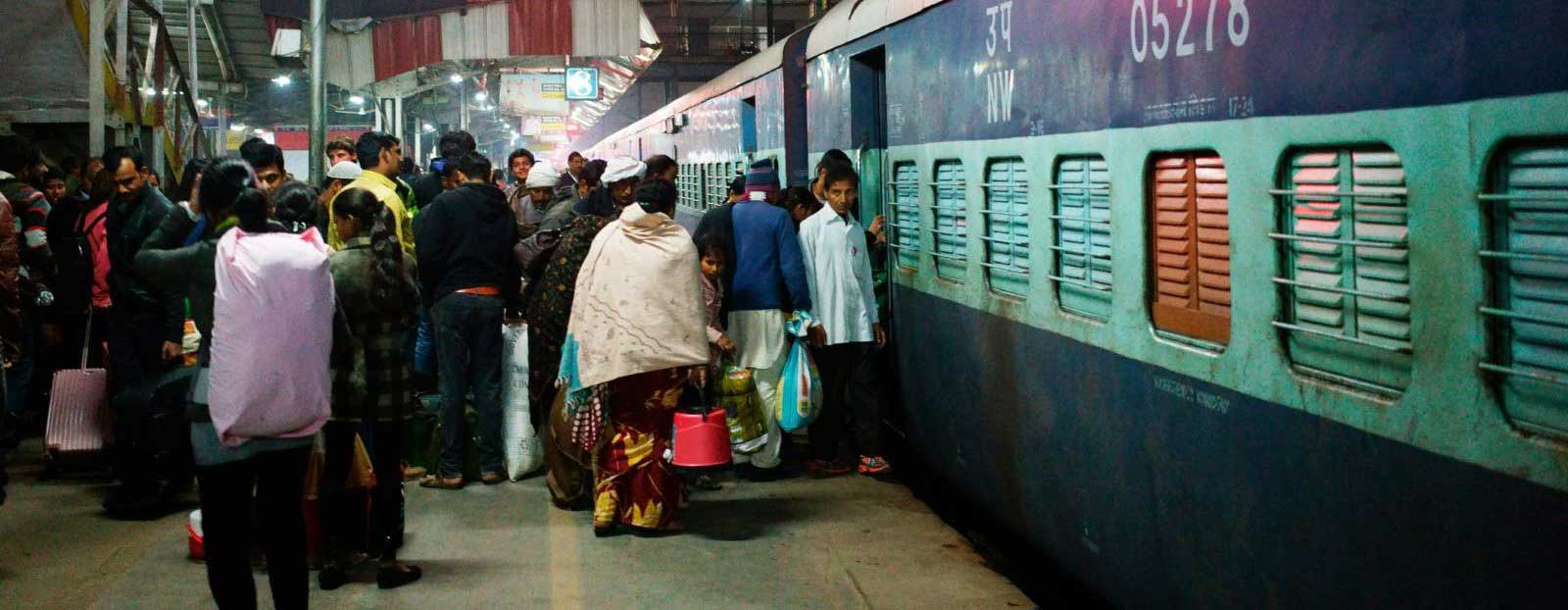

11 Comments
I truly love the colour n truth u portray to us all thank u
Beautiful capturing of this sacred place. Sat Nam.
How wonderful!
Thank you.
A few months ago, I was in Amritsar for one night but completely overslept and missed the temple service as I had to fly out!
I was super disappointed that I never saw the temple.
Your photos are incredible and capture so much life and action.
Man, India ???????? Has forever changed me.
I got sick in Nepal & went there to recuperate.I slept for two days and then rather than wait in the long food line for men.I ate at the street vendors,samosas for 1 rupee & cup of ice cream for the same.
What I was hoping to learn after reading the title was, how does this work? Is all of the food and labor donated? How can any temple afford to feed 50,000 or more people every day?
What a treat to read your narrative. To appreciate your experience and discoveries. To know such a place exists that feeds so many. The people there live faith.
Thank you!
Hi Emily,
Thanks for this post. This is a wonderful compilation of a probably very inspiring place...provided you have the stomach for India. I spend a lot of time in India for work (there 3x a month on average) and it's very sad to see how India, a culturally and spiritually very rich nation with probably one of the most awesome cuisines in the world becomes a big filthy junkyard. Wanna see what the future holds for human kind in terms of overpopulating and exhausting this planet? Go to India and you'll have the best One Snap...
Dont the Sikhs do this in the West, USA for thier flock.
Food looks good BUT so crowded.
Still wary of India overall, like to sample floating palace used in 007 movie Octopussy.
@terry all food is donated and most of the prep and cooking is done by volunteers supported by a small complement of employees. The employees in turn are paid from monies raised via donations so you can say the whole operation is donation/volunteer based.
I stayed at the Golden Temple for several days. I had gotten sick on my return from Nepal and sweated it out
in a private room. I was too weak to wait in line to get fed,but lived on Samosas for one rupee each from a roving cart.
They didn't charge me a rupee for anything,so when I was able to cross the bridge,I made a large donation,
even tho I was broke in those days.
What fun to see your beautiful pictures of the Golden Temple. I was there two years ago. It is hard to capture the grand blending of love, compassion, faith, and tradition all woven into a colorful tradition of sights, sounds, smells and tastes that are so different than our own.
If you can’t get to India, a little closer to home, in Yuba City, California, is the largest Sikh temple outside of India. In the fall of each year, they hold a huge festival and parade.. Again they give out free food, serving the thousands who come with great generosity. I might add that by 8:00AM the morning after the two day festival there is not one scrap of litter anywhere on the streets, Amazing! Amritsar and Yuba City, are world’s apart, very, very different, but the hearts of the Sikh people shine with their love and generosity.